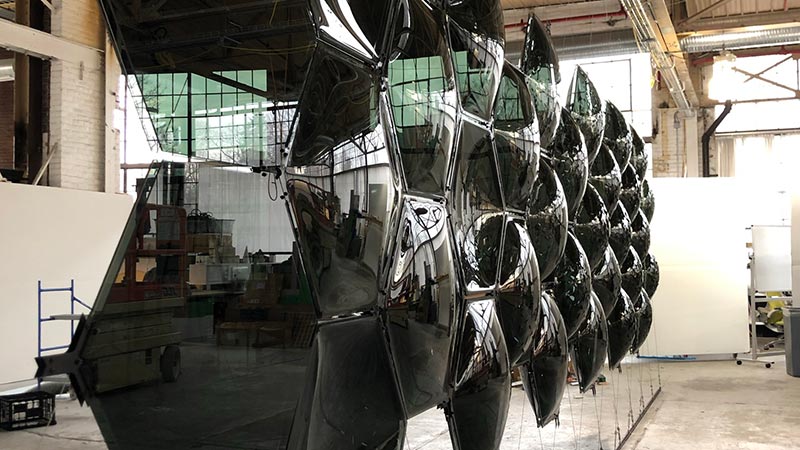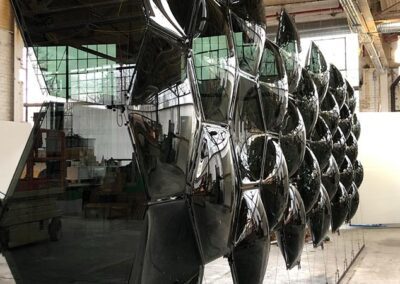Long Range works with the geometrical modification of glass at a variety of scales to access a range of acoustic behaviors: reflective, diffusive, and absorptive. The intention is to recalibrate glass and sound to one another, including seldom-accessed parts of the acoustic spectrum. Moving from flat pane to slumped forms, the hexagonal components of Long Range become increasingly complex across the length of the surface, culminating in deeply curved panels with porous openings. The flat end exhibits acoustic reflection, the center is more diffusive, and the severe end is absorptive and partially transparent to sound. Two layers of glass are used to increase effective surface depth and create cavities in some modules that absorb sound, via a process known as Helmholtz resonance. The material research has focused on the production of refined and predictable glass components, acoustic testing of full-scale prototypes, and strategizing a prototypical wall assembly for sonic testing and variation. Specific lines of research within the development of Long Range include controlled slumping of glass through cut patterns (most notably auxetic patterns) and room-sized formal and acoustic effects through wave-based simulation techniques. Lab testing demonstrates a correlation between the severity of curvature, the presence of openings, and acoustic behavior, indicating that traditional realms of acoustic behavior may be part of a single continuum.
Project Leads: Misri Patel, Oliver Popadich
Project Team: Elizabeth Teret, Dan Tish, Maryam Alhajri, Ryan Craney, Amin Aghagholizadeh, Isabelle Leysens, Kelly Gregory
Installation Team: Charlie O’Geen, Mehdi Shirvani, Mackenzie Bruce, Laurin Aman, Jessica Sato
Funding: Guardian Industries, Taubman College, Arcgeometer


